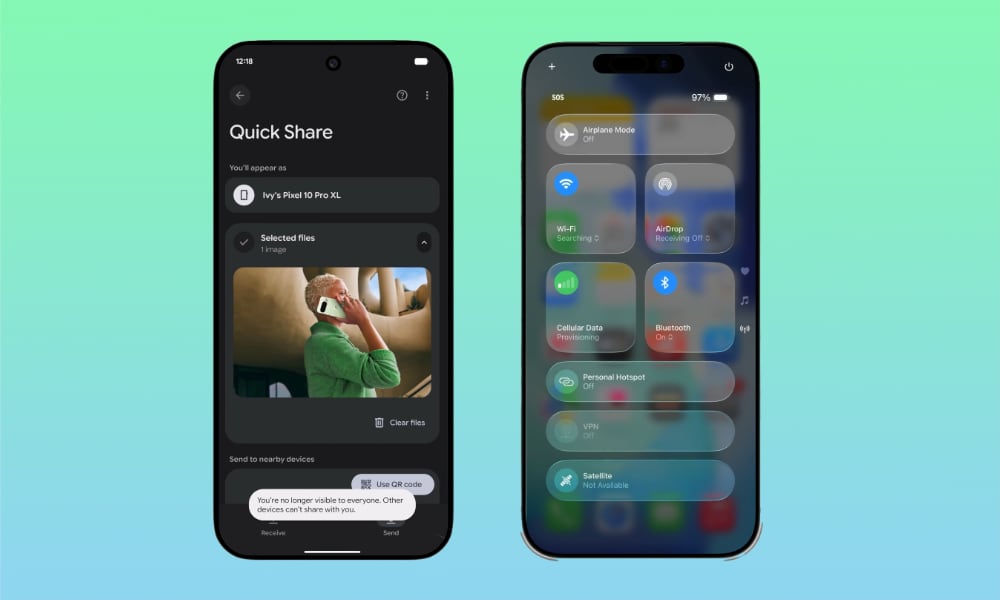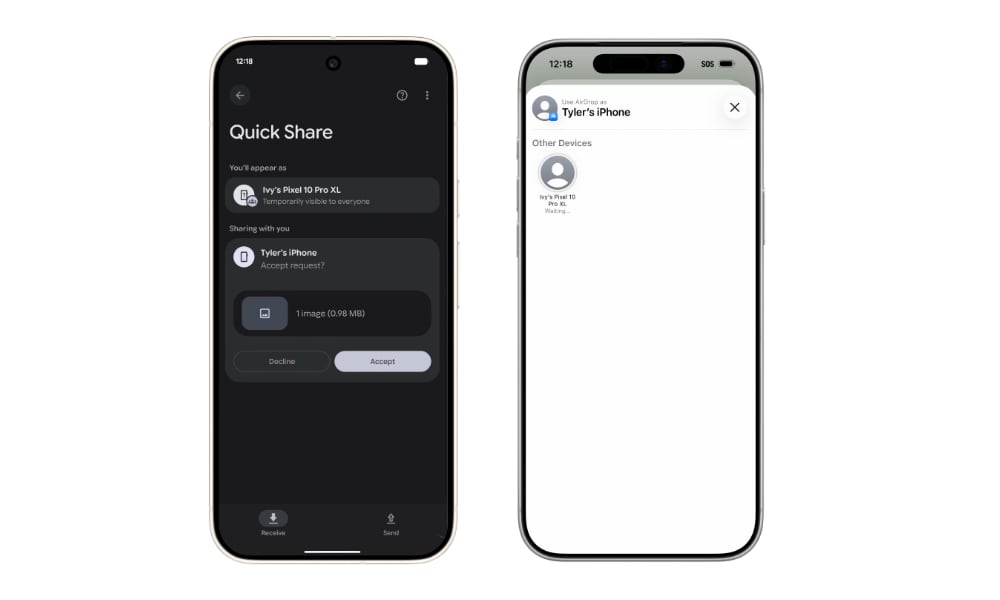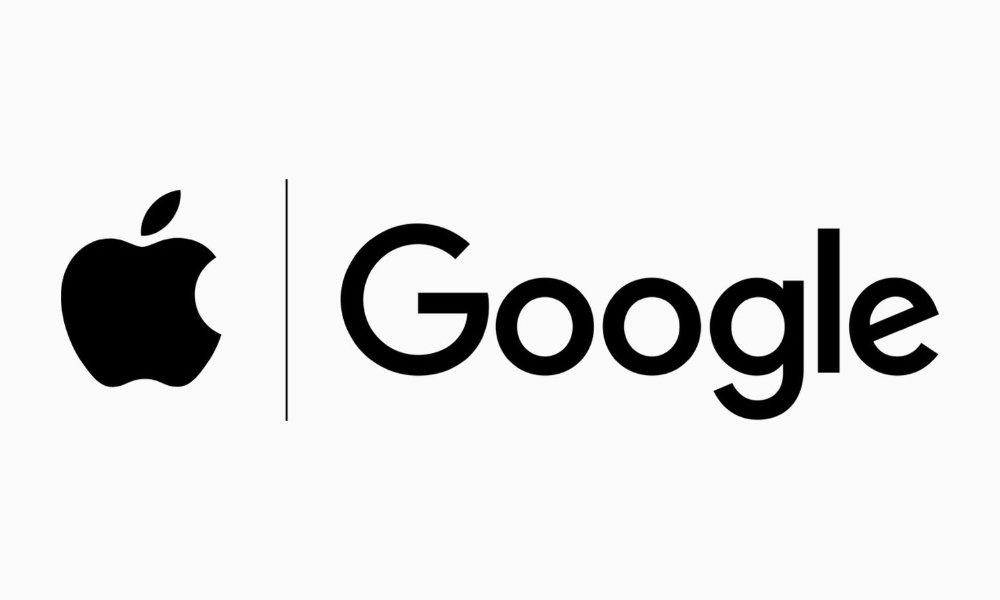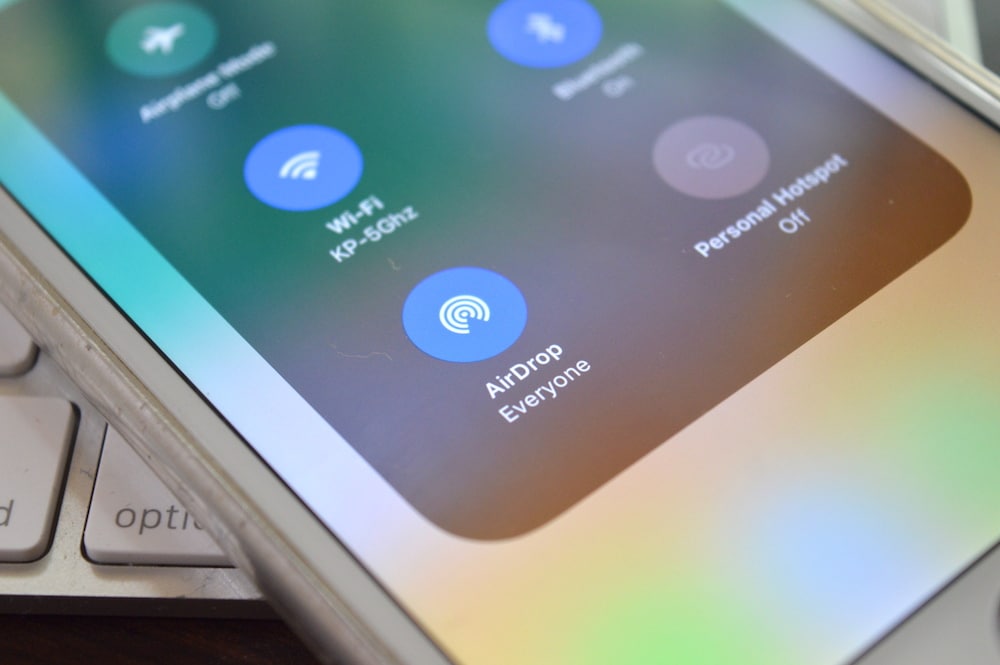Pixel 10 Gets AirDrop Support, and Apple Isn’t Saying a Word
 Pixel sharing to an iPhone via AirDrop [Google]
Pixel sharing to an iPhone via AirDrop [Google]
Toggle Dark Mode
In an interesting cross-platform twist, Google’s Pixel phones are gaining the ability to exchange files with the iPhone via AirDrop, starting with the Pixel 10. It’s an extension of Google’s Quick Share feature, but the Android maker is being somewhat cryptic about exactly how this came to be, beyond saying that Apple wasn’t involved in its development.
In fact, Google’s announcement doesn’t mention the word “Apple” at all, instead simply saying that Android and iPhone users can now exchange files using AirDrop:
Today, we’re introducing a way for Quick Share to work with AirDrop. This makes file transfer easier between iPhones and Android devices, and starts rolling out today to the Pixel 10 family.
The company goes on to cite this as another example of its work on cross-platform capabilities, with the expanded Quick Share joining RCS and unknown tracker alerts as yet another way of bridging the divide between Android and iOS.
The announcement raises more questions than it answers. It’s nice to know that AirDrop will start working with the Pixel 10, but given how closely Apple tends to protect its walled garden, it would be helpful to know whether this was done with Apple’s blessing.
A post on Google’s Security Blog makes it clear that the Android version isn’t a hack or a workaround:
This feature does not use a workaround; the connection is direct and peer-to-peer, meaning your data is never routed through a server, shared content is never logged, and no extra data is shared.
This strongly implies it’s using Apple’s own AirDrop protocol, but when The Verge’s Allison Johnson reached out to Google to ask about Apple’s involvement, spokesperson Alex Moriconi said it wasn’t a collaboration. “We accomplished this through our own implementation,” Moriconi told The Verge.
He emphasized that implementation was carried out with all necessary due diligence, including having it vetted and penetration-tested by third-party security firm NetSPI.
What Google Isn’t Saying — and Why It Matters
Still, there’s a lot of room to read between the lines here. Just because Apple didn’t help Google develop its solution doesn’t mean that it didn’t give the company permission — tacitly or otherwise — to pursue it. While many smaller companies have tried to tunnel under the walls into Apple’s garden, they’ve been repeatedly and bluntly shut down.
Johnson said she didn’t get a straight answer out of Moriconi about how Apple might respond. Instead, he gave a rather generic PR statement that “we always welcome collaboration opportunities to address interoperability issues between iOS and Android.”
Still, it seems odd that a tech giant like Google would risk this move without at least consulting Apple, but that could be its ace in the hole. Google is not only far too big to be rebuffed by Apple; the two companies have also long been intimately involved in other critical areas, from the Exposure Notifications of the COVID-19 pandemic and alerting Android users when they’re being tracked by AirTags to the multi-billion-dollar-a-year deal that keeps Google Search front and center on Apple’s devices. There’s also the possibility that Google could soon be building the brains behind Siri 2.0.
This deep relationship makes it likely that Google informed Apple of its intentions and was given at least an indifferent green light, but it’s equally possible that Google is taking its chances on Apple being unwilling to risk the PR firestorm of shutting this down — especially in an era when the European Commission is pushing hard for this exact level of interconnectivity. Those rules may only apply in Europe, but Apple’s executives know the writing is on the wall. Last year, Apple opened up digital wallets and NFC payments worldwide, despite that also being strictly an EU requirement.
The new connectivity comes with a few catches, as outlined in Google’s Quick Share support doc, which has been updated to include AirDrop. The big one is that it won’t work with the more private “Contacts Only” mode; the iPhone, iPad, or macOS user on the other end needs to have set their AirDrop to “Everyone for 10 minutes.”
That’s a bit inconvenient, but likely understandable as the cryptographic handshake required to securely verify contacts would be considerably harder to engineer without Apple’s involvement.
This Could Be the Start of Something Much Bigger
Google’s move puts the discovery of temporary AirDrop code-based sharing in a recent iOS 26.2 beta in an entirely new light. Most initially assumed this feature was intended to let two iPhones create a temporary, ongoing sharing relationship without swapping contact info. However, in this context, it feels more like preparation than convenience. Apple may be quietly laying the groundwork to open up the tent flap to Android devices.
If we had to guess — and it’s pure speculation at this point — this feels like it could be a quiet testing of the waters. Apple knows it’s unlikely to walk away from the European battle to keep its connectivity protocols locked down with a complete win, and if it has to make some smaller concession to protect its crown jewels, AirDrop seems like a pretty easy hill to die on.
Letting Google develop its own implementation — without any overt help from Apple — lets both companies see how this plays out before committing to anything long-term. It’s also telling that this is exclusive to the Pixel 10 for now, and while Google will probably roll it out to older Pixel models, there’s no word on when that will happen, much less when it might expand to other Android devices.










